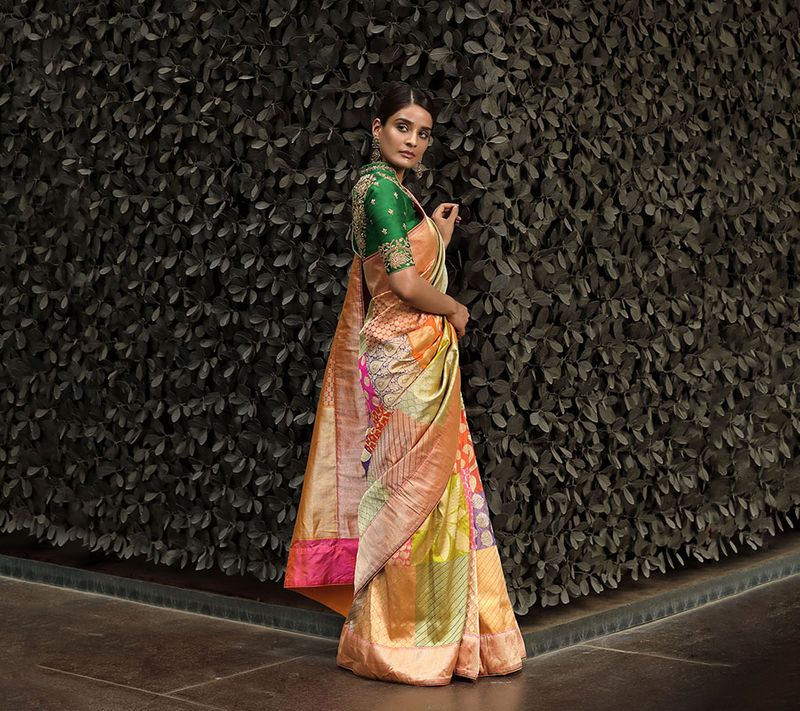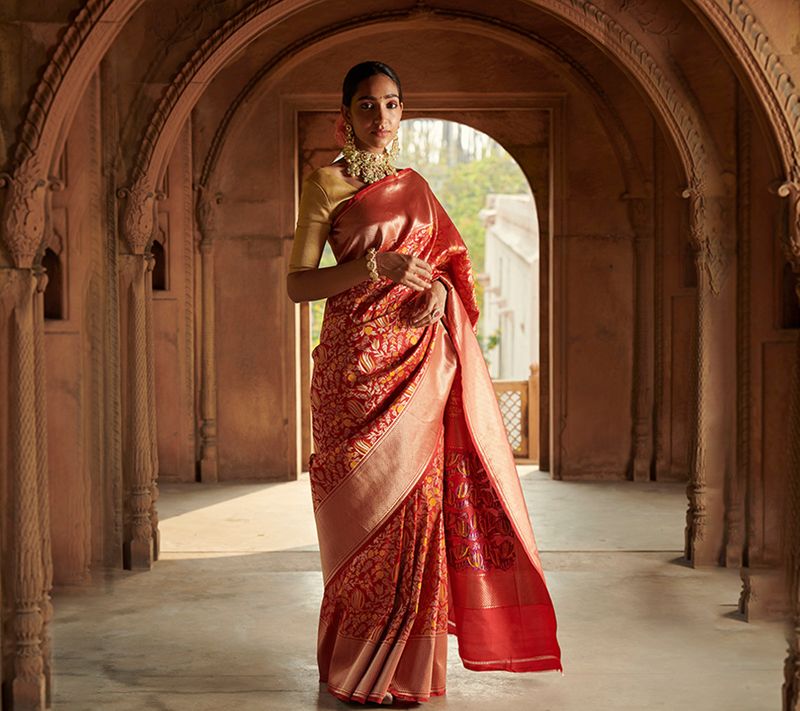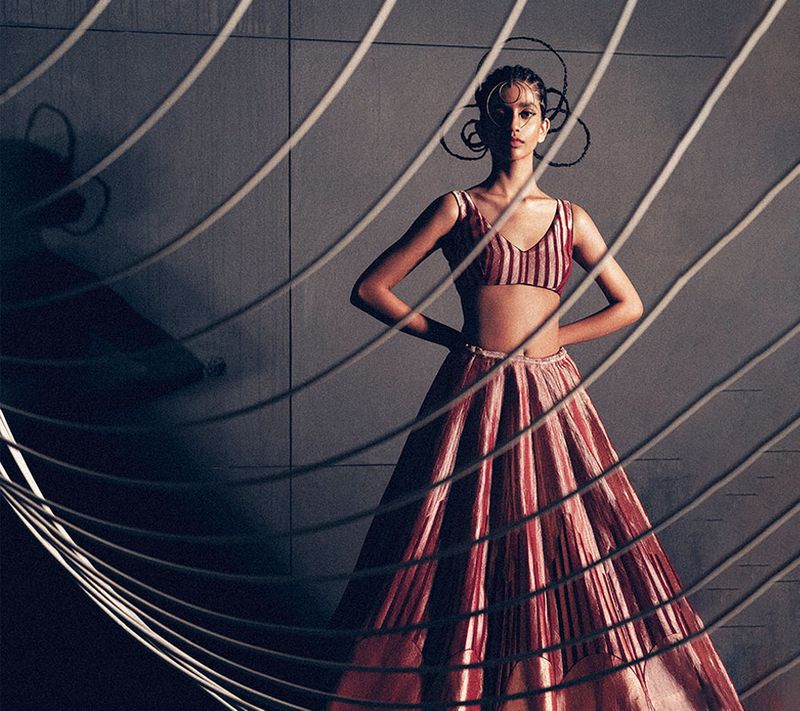It’s often said that the story of the Banarasi weave is as timeless as the city of its birth—Banaras. If one were to trace back its origins, the Rigveda speaks of hiranya which literally translates to ‘gold cloth’. It is believed that this is the very first reference to the weave that we know as Banarasi today. No doubt, the heritage weave has had its ups and downs over the last few decades but it seems to have reclaimed its pride of place. We take a closer look at how the art form has sustained over the centuries—and how it’s adapting to modern times.
Breathing new life into an ancient craft
Over the last couple of decades, this historical fabric has faced challenges on various fronts. Apart from the lack of awareness amongst the younger generation of consumers, there’s also the next generation of artisans who are unwilling to get into the business owing to how labour-intensive and low-paying the job is.

“The next generation does not want to work in the industry because of how meticulous the job is. Moreover, the takeover of 3D technologies and designs is ruining the market of handlooms. Our heritage and weavers need support now more than ever,” notes Khushi Shah, Creative Director and Founder, Shanti Banaras.

Asha Gautam, who has her eponymous label, opines that perhaps the biggest threat to the Banarasi is the power loom. “Handicrafts in the woven sector are being replaced by power looms which are killing their craftsmanship. It beats their hard work and time in terms of price. A lot of people who don't value handmade crafts or are unable to differentiate between handlooms and power looms are preferring power loom woven products due to low price points. This is making the sustenance of these artisans very difficult,” explains Gautam.

The process
So, what is it that actually goes into the making of a Banarasi? An authentic, handmade Banarasi can take anywhere between two to six months depending on the intricacy of the pattern. As Shah explains, the process begins with tracing the design on graph paper which is then hand-punched on stencils. “Jacquard cards are then used to draw the design on the fabric. Next, the yarn is dyed according to the preferred colour before the weaving process that uses warp and weft,” she says.

Gautam further details the handloom process. “During the pre-loom process, two people prepare and set the loom, and only one person weaves. The weaving time depends on the intricacy of the design and the number of colours used. Banarasi is done in the extra weft, supplementary weft or kadwa design with the help of a raised jacquard mechanism.” She goes on to explain that a Banarasi lehenga is cut out from the saris and often kalis are directly woven on the loom, thus saving time.
A renewed interest

Life does have a way of coming full circle. While Bollywood-inspired (read OTT embellishments and bling) looks have ruled wedding trends for the past two decades or so, there’s now a refreshing shift towards traditional textiles and in particular Banarasi. More and more younger brides are opting for this age-old textile. “Banarasi lehengas are very light compared to hand-embroidered pieces, so comfort wise it’s definitely a preference for new-age brides. We’ve also started doing embroidery in a few of our classic pieces to add a bridal touch to them,” says Shah.

Lavanya Nalli, chairperson, Nalli Sarees, has also noted an increased interest in the Banarasi. “Brides have a strong preference for classic Banarasi sarees on their special day despite the available choices of contemporary ethnic wear. They uphold the traditional look with grace and pride. When considering the love of women for authentic Banarasi sarees, the interesting fact is that women are no longer adorning them only during weddings and festivities. It has gone a step ahead with women opting for Banarasi saris even for important events. This has resulted in the extension of the colour palette from traditional wedding colours to pastel tones,” she says.

Nalli shares that while the pandemic was certainly challenging for the craft’s entire ecosystem, the love for Banarasi sarees hasn’t faded. Gautam further points out that the Banarasi’s beauty is also due to its versatility. “The versatility and variety of fabrics produced in this classic weave make Banarasi more than just a sari or dupatta. Banarasi lehengas, pants, jackets, tops, and kurtas are also trending, catering to the demands of the young crowd. The fabric has been put to multiple uses and is staying relevant even today,” adds Gautam. Truly, the beauty of the Banarasi is hard to resist and as the ancient craft prepares for the new order, we’re more than ready to embrace it in all its forms.


